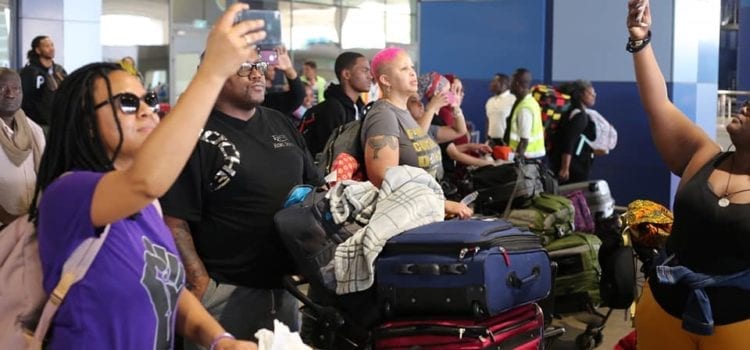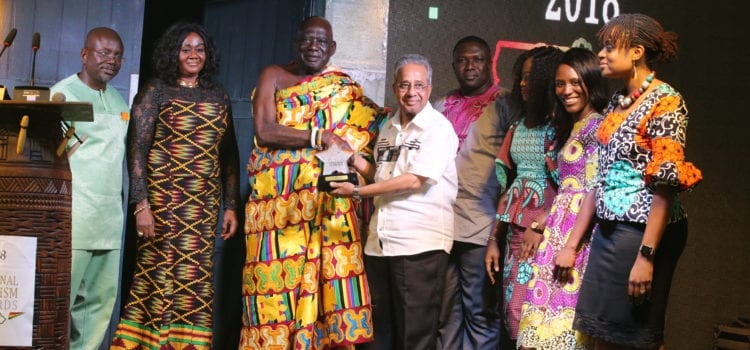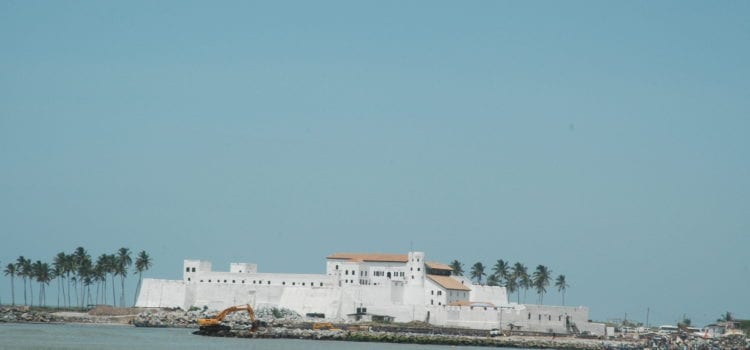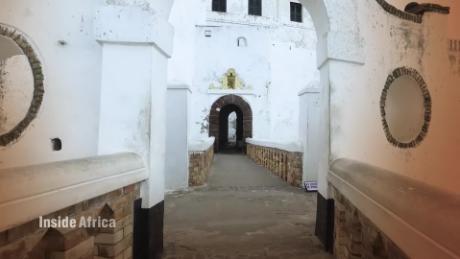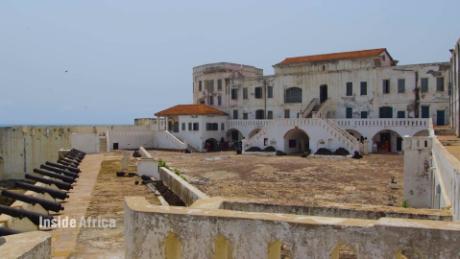France24 Report on Year Of Return: Hundreds of African-Americans resettle in Ghana
France24 has in a report looked at how Ghana is increasingly becoming home to hundreds of African-Americans especially in light of the on-going ‘Year of Return, Ghana 2019’ campaign. The report looks at the lives of some African-Americans who have settled in Ghans over the years. Read and watch the report below.
Ghana was one of the main West African departure points for the transatlantic slave trade. Today, the government has launched a campaign to reach out to the descendants of those Africans who were forcibly removed from their homelands. It has dubbed 2019 the “year of return“. Several hundred people have already put down roots in Ghana, many of them African-Americans. Our colleagues from France 2 report, with FRANCE 24‘s James Vasina.
This article comes on the heels of other reviews published earlier in the year.
Watch the programme/video report prepared by Patrick Lovett and James Vasina below.
Related Articles:
HomeToGo – https://visitghana.com/ghana-listed-in-top-10-trending-summer-destinations-for-2019/
Year Of Return: “Come with an open mind and heart” – Mona Boyd invites Diasporans
Year of Return: African Diaspora in Ghana for Back2Africa Festival
CNN: CNN Travel lists Ghana as place to visit in 2019
About Year of return, Ghana 2019
The “Year of Return, Ghana 2019” is a major landmark spiritual and birth-right journey inviting the Global African family, home and abroad, to mark 400 years of the arrival of the first enslaved Africans in Jamestown, Virginia. The arrival of enslaved Africans marked a sordid and sad period, when our kith and kin were forcefully taken away from Africa into years of deprivation, humiliation and torture. While August 2019 marks 400 years since enslaved Africans arrived in the United States, “The Year of Return, Ghana 2019” celebrates the cumulative resilience of all the victims of the Trans Atlantic slave Trade who were scattered and displaced through the world in North America, South America, the Caribbean, Europe and Asia.
One of the main goals of the Year of Return campaign is to position Ghana as a key travel destination for African Americans and the African Diaspora. In 2019, the events planned throughout the year will serve as a launch pad for a consistent boost in tourism for Ghana in the near and distant years. Beyond tourism, this initiative supports one of the President’s key developmental agendas in Ghana Beyond Aid. We know that tourism can be a leading indicator to business and investment.
We are focused on ensuring that our brothers and sisters have a safe, pleasant and wonderful journey home so they will want to come back, get involved, see the opportunity that exists in Ghana for us to work together and begin to rebuild what has been stolen and lost over the past 400 years.
Board inaugurated to manage Bunso Arboretum tourism
The Ghana Tourism Authority together with the Akyem Abuakwa Traditional Council has inaugurated a five-member management board to see to the affairs of the Bunso Arboretum tourism site located at Bunso in the Eastern Region.
They are expected to elevate the tourist site to a world-class eco-tourism destination.
The members are Mr Ekow Sampson, Deputy CEO of the Ghana Tourism Authority, Mr Daniel Ofori Attah, a representative of the Akyem Abuakwa Traditional Council, Dr Seth Appiah Kubi, Executive Director of A-Rocha Ghana, Kwame Boateng, a board member of Ghana Tourism Authority, Mr Albert Mensah of DCCL, the current managers of Bunso Arboretum.
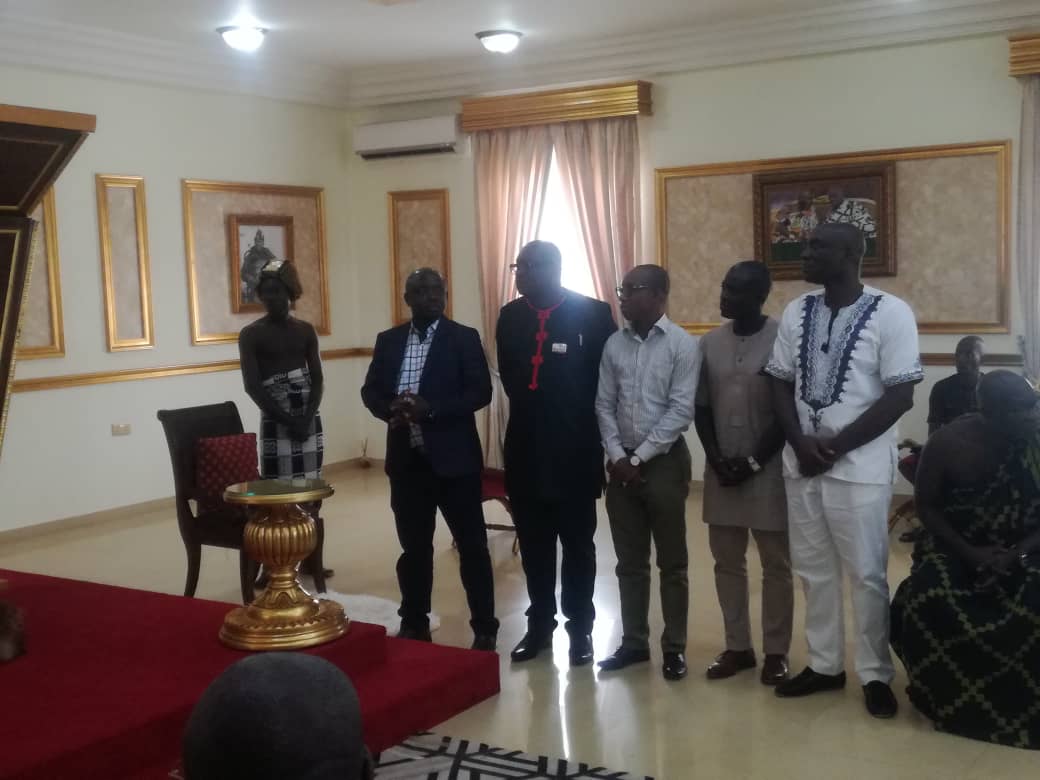
The rest are Frederick Adjei-Rudolph the Eastern Regional Manager of GTA, Nana Twumasi a representative of Okyeman Environmental Foundation and a member each from the Forestry Commission and CSIR.
Okyehene Osagyefo Amoatia Ofori Panin, the chief of the Akyem Abuakwa who inaugurated the board tasked them to make the tourist site one of the best in Africa.
“This new role is very difficult because you will be working to make Ghana a better country, people go onto boards and become very rich suddenly but this board is exceptional. This is an eco-friendly investment enterprise and if we manage it well it will become a treasure for Ghana which will end us great forex exchange.”
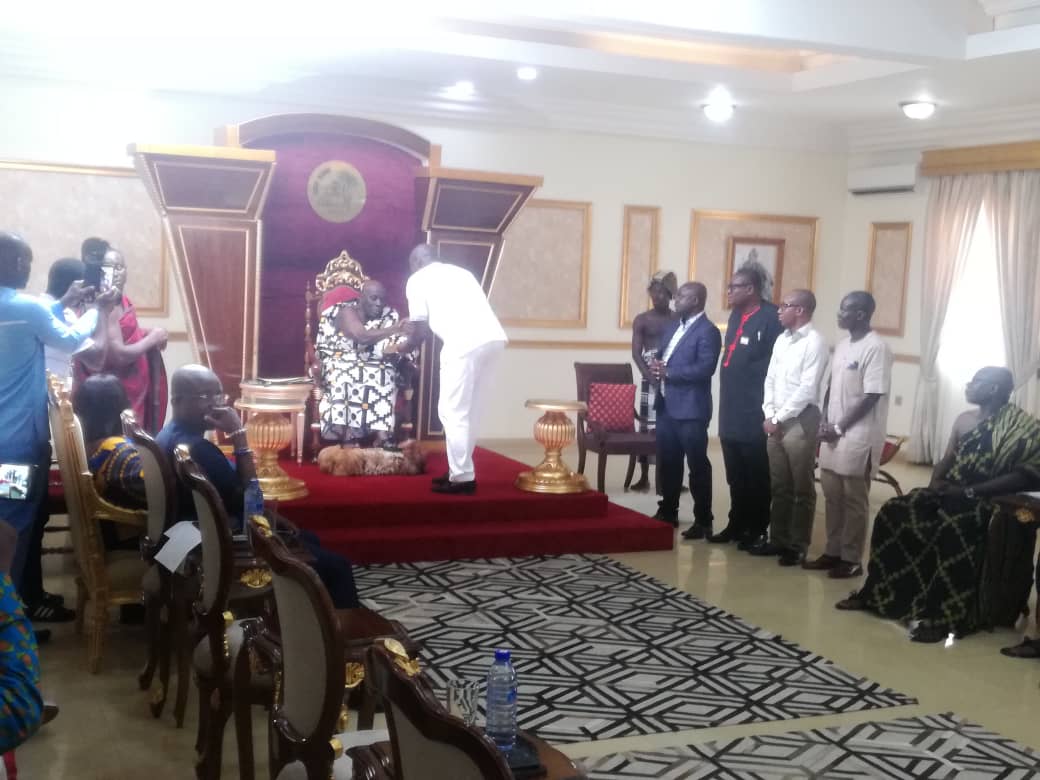
” Many well-to-do nations do not have natural resources and minerals but they have managed their tourist sites very well which has then become a major revenue generating point for them and I believe Bunso Arboretum has all the medicinal trees, plants and species and a calm environment to also become one of the best tourist attractions in the country and beyond so i urge you all to work very hard for us to achieve this dream”.
Speaking to Journalists after the inauguration, the Chief Executive Officer for the Ghana Tourism Authority Mr Akwasi Agyemang indicated the authority’s commitment to making Ghana a tourist destination.

“Ghana Tourism Authority is committed to making the country a tourist hub by harnessing every potential site so we have put together one of the finest architects and engineers to join the team which will be managing the affairs at Bunso Arboretum for us to get the best out of the place. This year we launched the Eat Ghana, Wear Ghana, See Ghana campaign all in the name of promoting Ghana, our President recently stated when he visited Tamale that we should not wait for foreigners to come to our country to tell us to visit our sites before we do so”.
“We have put plans in place to ensure the Bunso Arboretum provides Job for the youth in the area and improve economic activities in the area. We will add a playing ground to the site, hotels and resting places to facelift the site and work to ensure Bunso Arboretum becomes one of the best tourist destinations in the country.”
–
Source: citinewsroom.com
Ghana National Tourism Industry Awards 2018 held
The much-awaited Ghana Tourism Awards to honour deserving facilities in the tourism industry in Ghana for the year 2018 was held at The Event Haven, La on Friday, March 22, 2019. In all 29 awards were presented to organisations and individual in Accommodation, Food and beverage and Entertainment, Travel Trade and Media. In addition, honorary awards were given to six (6) personalities who have contributed to the growth and the development of the Tourism Industry over the years.
Click here to view photos of awards:
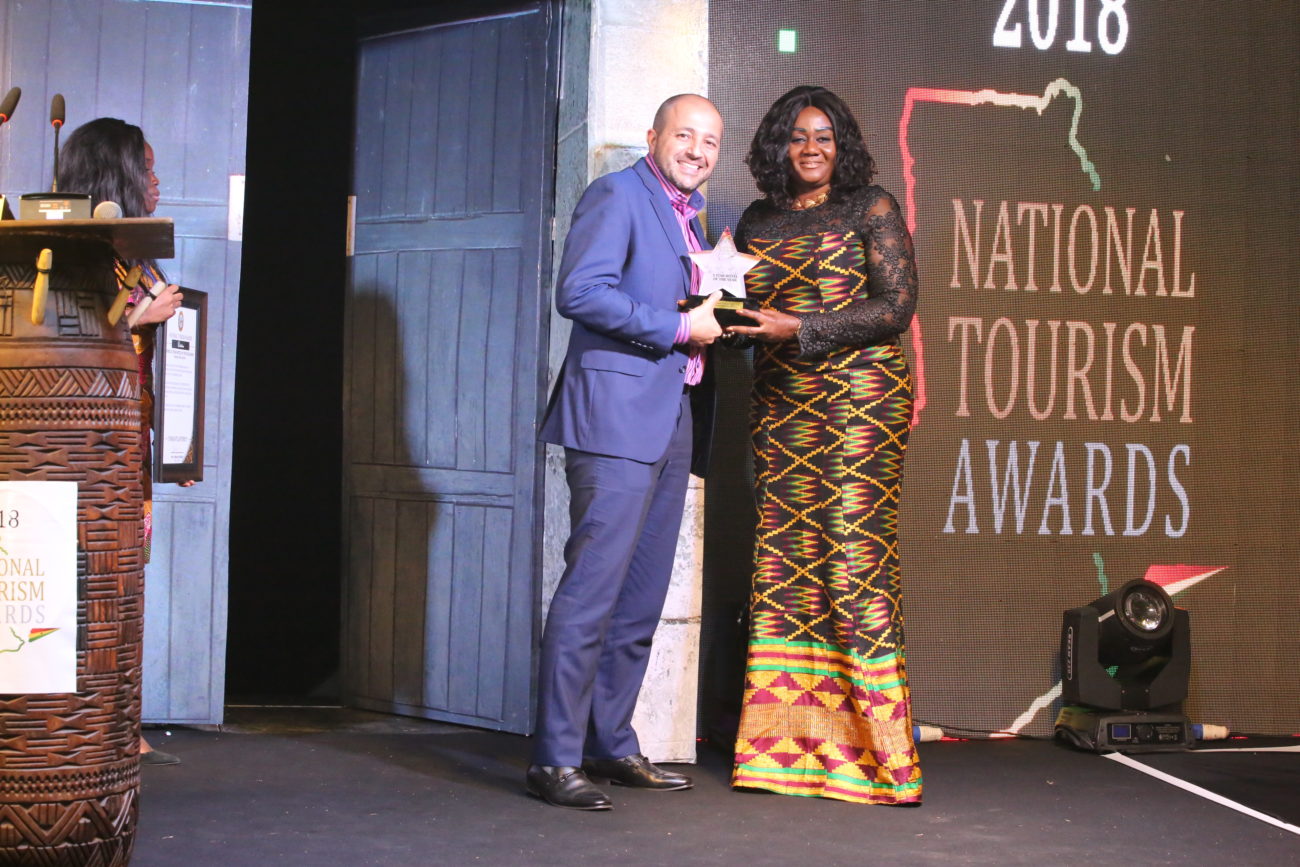
Below are the award winners for the various categories.
HONORARY AWARDS
1. Edwin Owusu-Mensah – (Fmr Dir. Ministry of Tourism, Arts And Culture, Former Dep. Exec. Dir. Ghana Tourism Authority)
2. Stella W. Appenteng – (CEO – Apstar Tours Ltd)
3. Kwame Ofosu Bamfo (MD – Alisa Hotel)
4. Sajid Ali Kahn – (GM – Tang Palace Hotel,Accra,Ghana)
5. Erieca Bennett – (Head of Mission, Missions Forum: Africa Diaspora Missions Network)
6. Mark Williams – (CEO – Ashanti African Tours Ltd)
ACCOMMODATION AWARDS
- 5 Star Hotel of the Year – Movenpic Ambassador Hotel
- 4 Star Hotel of the Year – Tang Palace Hotel
- 3 Star Hotel of the Year – Holiday Inn Hotel
- 2 Star Hotel of the Year – Ibis Styles
- 1 Star Hotel of the Year – Coconut Grove Sakumono
- Guest House of the Year – Petit Palais Guesthouse
- Budget Hotel of the Year – Ronna lodge, Adidome
- Hostel of the Year – Bedstudy Osu
- Serviced Apartment of the Year – Red Mango Apartments chapel Hill
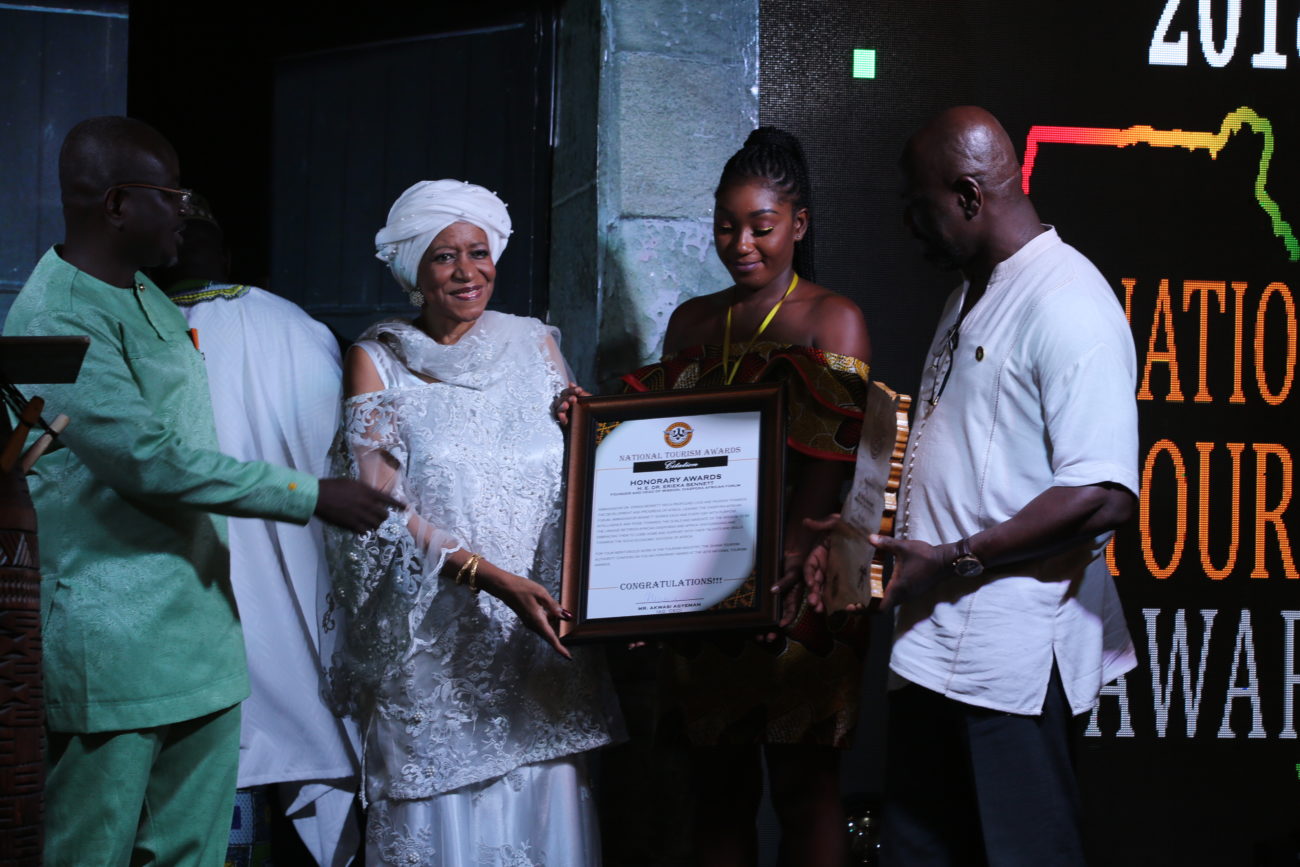
FOOD AND BEVERAGE AND ENTERTAINMENT (CATERING) AWARDS
- Restaurant Grade 1 – Azmera Restaurant
- Restaurant Grade 2 – The Buka Restaurant Ltd
- Restaurant Grade 3 – Madela Restaurant, Sunyanil
- Fast Food of the Year – Papaye Fast Foods Ltd.
- Night Club of the Year – Plot 7 Night Club, Osu
- Traditional Caterer (Chop Bar) of the Year – Bush Kanteen Shiashie,
- Drinking Bar of the Year – The Treasures Pub, Agbogba
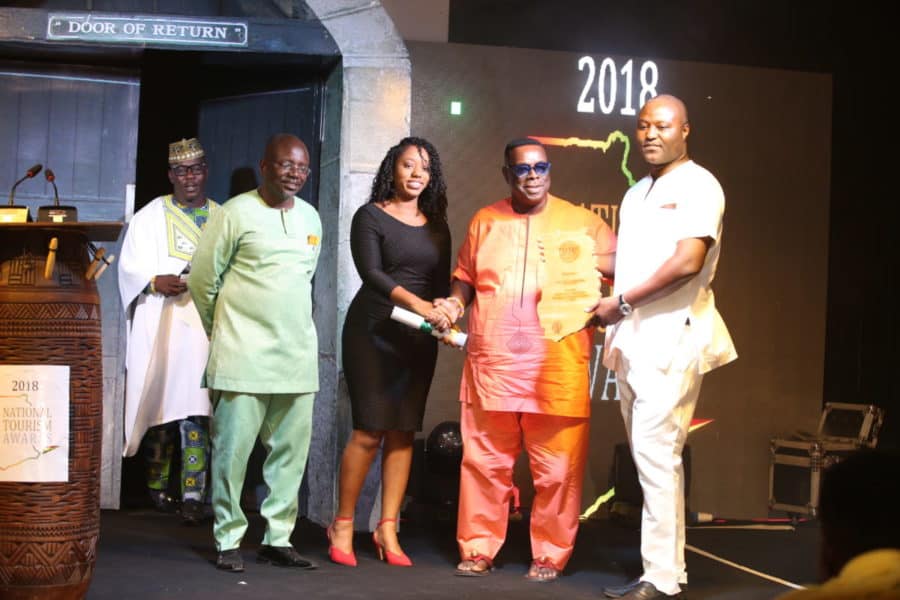
TRAVEL SERVICES AWARDS
1. Airline of the Year – South African Airways
2. Tour Operator of the Year – Landtours Ghana
3. Travel Agency of the Year – Satguru Travels Ghana Ltd
4. Car Rental Service of the Year – Atlas Rent A Car
5. Visitor Attraction of the Year – Kakum National Park Ghana
MEDIA AWARD WINNERS
1. Tourism Writer of the Year – Kofi Akpabli
2. Tourism Oriented Media TV – TV3 Media,
3. Tourism Oriented Media (Radio)- Citi 97.3 FM
4. Tourism Oriented Media (Print)- The Mirror
5. Tourism Oriented Media (Online) – Voyages AFRIQ MEDIA
6. Tourism Programme of the Year – Our Heritage by UTV Ghana
About The Awards
The National Tourism Awards was instituted by the Ghana Tourism Authority in 1997 to reward excellent performance in the tourism sector.
It is one of the flagship events of the GTA held annually and it sets the tone for high standards in service delivery among practitioners in the tourism sector.
Awards, including honorary awards, are presented to practitioners and organisations who have made maintained high standards and individuals who have made immense contributions to the growth and development of Ghana’s tourism industry.
The award usually attracts high profile personalities in government, business, politics, academia and practitioners within the tourism industry.
GHANA KICKSTARTS YEAR OF RETURN WITH DURBAR AT AKWAMUFIE
Activities celebrating the Full Circle Festival is drawing to a close as the Country ushers in the Year of Return, Ghana 2019. Officials of the Ministry of Tourism, Arts and Culture , Ghana Tourism Authority and office of Diaspora Affairs joined the Chiefs and people of Akwamu to celebrate several Hollywood stars of African descent at a colourful ceremony.
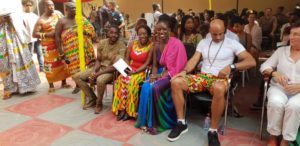
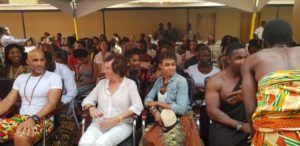
Drawing parallels between the resilience and fighting spirit of the Akwamu people, the Paramount Chief, Odeneho Kwafo Akoto III, congratulated the star studded entourage for their exploits in the USA which has now made them global icons. Actor Michael Jai White and Marketing icon, Bozoma Saint John were both enstooled as warriors. Hollywood Actor, Boris Kodjoe, who coordinated the trip also came up for special recognition for his untiring efforts in promoting Ghana to the rest of the World.


The Year of Return is a special spiritual and birthright journey being cordinated by the Ghana Tourism Authority to commemorate 400 years since the first enslaved Africans arrived in North America. The initiative has pushed Ghana into 4th place in the list of 19 must visit places in 2019 put together by CNN.


Inside Ghana’s Elmina Castle is a haunting reminder of its grim past
Source: Tanni Deb, CNN and Segun Akande, for CNN (CNN Africa)
Across Africa, from the north of the Sahara to the West African coast sit many relics of the continent’s early interactions with Europe.
‘A dark history’
See more stories from Inside Africa and share your thoughts with us on Facebook, Twitter and Instagram
2018 Ghanaian Christmas version of “12 Days of Christmas” goes viral
A Ghanaian Band Kwan Pa Band, has released what is turning out to be the 2018 Christmas carol which has already gone viral on various social media platforms. Kwan Pa Band gave viewers the hilarious version of the the popular “12 Days of Christmas” carol at Joy Prime TV Studio. This has been described as typical #feelghana moment.
Watch and enjoy below…
The lyrics to the “Palm Wine Music” version of the popular carol is as follows:
LYRICS:
On the FIRST DAY of Christmas my true love gave to me, A PARTRIDGE IN A PEAR TREE!
On the SECOND DAY of Christmas my true love gave to me…, PAYA NE ANWAMO … , and a partridge in a pear tree!
On the THIRD DAY of Christmas my true love gave to me…, FANTA NE NKATIE… , Paya ne anwamo, and a partridge in a pear tree!
On the FOURTH DAY of Christmas my true love gave to me…, K)T) NE ABENKWAN, Fanta ne nkatie, Paya ne Anwamo, and a partridge in a pear tree!
On the FIFTH DAY of Christmas my true love gave to me… KONTOMIRE, KYINGOM (chewing gum) NE ALEWA, NKATIE, NE K)K)) A YATOTO, and a partridge in a pear tree!
BRONYAAAAAA….! ????
Below is an extract on unique Ghanaian music by Prof. J.K. Anquandah.
Ghana is par excellence a nation of music. Every sphere of Ghanaian life-style throbs with music.
At the naming ceremony and the puberty rite, at the betrothal and the wedding, at the market and on the farms, at the blacksmith’s and the potter’s factory and at the beach fishing scene, at the village story-telling scene at night, at the chief’s durbar and the annual Yam Festival, at the traditional priest’s shrine or in the Christian church, at the social gathering or in the nightclub, music-making is ubiquitous.
Ghana’s contemporary musical world is characterized by an array of indigenous and foreign music types, employing local and foreign styles, techniques and instruments. There are ancient traditional instruments some dating back to 500-1000 years, such as the Seperewa, Adenkum, Dawuro, Akasa and the Ashiwa, the Nnawa, Odurugya and Atenteben
And there are foreign instruments such as guitars, trumpets, organs, pianos, saxophones and clarinets which have been introduced recently into the country. Today, the very imagination boggles at the fantastic array of music varieties produced by Ghanaian dance bands, choral groups, church musical groups, traditional recreational groups, funeral groups and royal music groups.
During the last half century, Ghana’s creative composers have sought to identify the country’s unique qualities of indigenous music and develop them. One such quality involves the technique known to musicologists as “contrapuntal.”
In such a musical type, each drum plays its own part and yet all the drums combine to form one unit, there is also a voice interplay of solo and chorus, with one calling and the other responding.
Ephraim Amu, Ghana’s celebrated composer, in experimenting on the contrapuntal concept, married Western type of harmony to traditional Ghanaian rhythm and produced at least a dozen musical compositions which world musical critics have adjudged as master pieces.
These include Adawurabome, Meda Preko, Nkradi, Alegbegbe, Yaanom ebibirima, Momma yenkoso nfro, Tete wobikyere, Konakatutuw, Miva miva, and Bonwere Kente.
This article examines some of the rich traditional sources which Ghanaian music-makers have tapped in order to make such an important contribution to the world’s musical heritage.
Ghanaian traditional music can be grouped into two major families, first, music for entertainment or recreation, and second, institutional music performed as part of social, religious, cultural or royal political functions or celebrations. Recreational or entertainment music seems to have the greatest variety of musical types employing varied instruments and also, quite, naturally, has the most popular types of music.
Source: National Commission on Culture
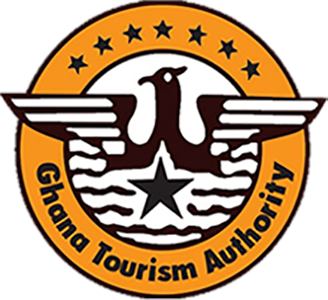

 Call Center
Call Center
